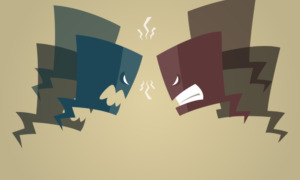In 40 years of working for progressive causes, I’ve never seen liberalism in such pathetic decay. What bizarre mechanism makes modern liberal brains go haywire over adolescents?
Religious nuts’ hysteria is explainable: They believe kids are satanic. But the liberal freak-out toward youth is so senseless and self-destructive that I suspect some larger ego malfunction.
Consider two liberally praised California authors proclaiming suburban youth apocalypse: Elliott Currie, in Road to Whatever: Middle-Class Culture and the Crisis of Adolescence (2005), and Meredith Maran, in Dirty: A Search for Answers Inside the Teenage Drug Epidemic (2003).
Currie pronounces “widespread alienation, desperation, and violence” among affluent teens, writing, “White youth are now the group at highest risk of some of the most troublesome and deadly of adolescent ills.” Maran finds an “epidemic of teenagers in crisis” despite “attentive, smart, loving parents.”
These books transcend mere untruth. They are clinically insane.
Popular author Maran butchers statistics wholesale; criminologist Currie insists “statistics back up” his case, then cites virtually none. Both reach dire conclusions by a patently fallacious tactic: profiling a few youths chosen precisely because they are troubled, then branding the entire suburban youth generation hell-bound. (Do that to blacks, Jews or women, and it’s called hate speech.)
I’ve repeatedly documented on these pages that today’s California teenagers have never been healthier and less criminal, violent, suicidal, imprisoned and drug-abusing. I’ll repeat the facts from standard crime and health references that Maran, and especially Currie, have no excuse for not knowing:
Over the past three decades, right up through the latest figures (for 2003-2004), California’s white teens have shown spectacular improvements by just about every significant measurement of behavior: felonies, down 63 percent; homicide arrests, down 76 percent; rapes, down 58 percent; violence; down 16 percent; drug offenses, down 43 percent; property crimes, down 74 percent; misdemeanors, down 43 percent; imprisonment, down 60 percent; violent deaths, down 54 percent; suicides, down 52 percent; drug abuse mortality, down 67 percent; murders, down 31 percent; traffic fatalities, down 50 percent; drunken driving deaths, down 60 percent; firearms deaths, down 47 percent; and births to teen mothers, down 48 percent.
To argue that richer youth suffer even remotely similar risks of violence as poor youth trivializes poverty’s devastating effects. Last year, California’s 500,000 poorest teens suffered violent death rates that were triple the rates of the state’s 500,000 richest teens. That includes twice as many traffic deaths, 16 times more murders, 17 times more gun casualties and 55 times more gun assaults. For all races, poverty multiplies risk.
Currie and Maran idolize their Sixties generation. (They find a few suburban kids today “alienated” and “scary”? Try the Manson family.) Currie theorizes that “the moral vision that prevailed in much of middle-class America in the 1950s and 1960s” protected youth and kept adolescents of his era innocent of drugs.
Maran admits that she and Sixties peers puffed “the benign ‘dope’ of our day”– not for “just getting high, as our kids seem to be doing now,” but for “changing the world” and “building a new society.” Right on! We suffered those bong-hits for the revolution!
Now, they agree (in Currie’s words) that “the drug scene has changed so dramatically that it is as if we were talking about another planet. … Nearly every drug you can think of is available to [teens] with disturbing ease,” providing “far more” chances for “adolescents to do something seriously risky.”
“Another planet” is right. California’s white-youth drug crisis exploded during the late 1960s, with peaks in violent deaths, suicides, random violence, crime, drug overdoses and other crises. In 1970, four times more white teens in California fatally overdosed, including 10 times more from heroin, than in 2003. Today’s rates of suicide and drug overdoses among California teens are among the lowest in the world.
How did Currie fail to notice that the parents of the troubled teens he profiled have worse problems, including rampant addiction, depression, violence and family destruction? Currie’s and Maran’s misplaced panic toward youth must stem from denial that their own pampered, white, middle-aged Baby Boomers show skyrocketing drug abuse, crime and disarray.
Currie and Maran are right that a chilling America is abandoning kids. But the damage of disinvestment is not some imaginary suburban teen apocalypse, but cycles of violence, crumbling schools and wrecked opportunities facing the poorest youth. Maran’s and Currie’s awful books only reinforce the reactionary myth that because rich kids are terrifying, poverty and inequality must not matter.































